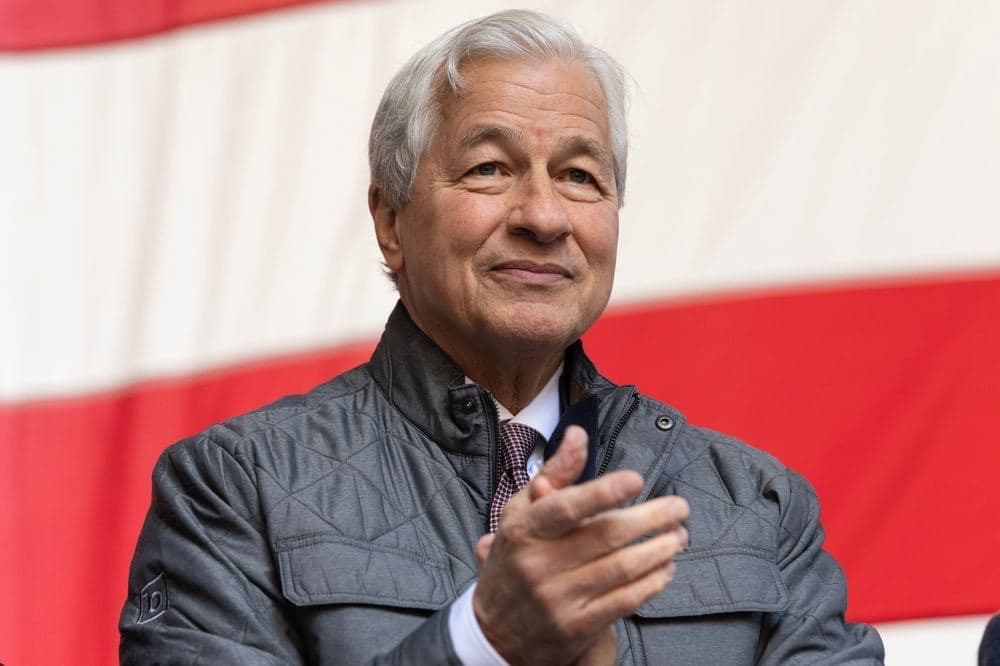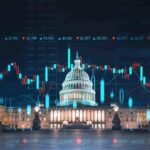Between the COVID-19 stimulus programs that saw the printing of approximately 20% of all dollars ever created, the still-high inflation and matching interest rates, and the stock market nonetheless riding relatively high, 2023 was marked by concerns about a possible recession or stagflation, and questions if the U.S. economy will achieve the much-discussed soft landing.
Such worries were largely eliminated by the start of 2024 as a euphoria, driven by a massive crypto market rally and a similar stock market surge that led to both the S&P 500 and the Dow Jones Industrial Average (DJIA) indices riding close to record highs, set in.
Still, there remains a list of both vocal and moderate bears who still foresee possible trouble on the horizon.
One of them – Jamie Dimon, the CEO of JPMorgan Chase (NYSE: JPM) – shared his view that there is still a 65% chance that the U.S. will enter a recession in 2024 in an appearance at the Australian Financial Review business summit.
At the same time, Dimon stated he would not be willing to rule out stagflation setting in and explained that the U.S. markets are displaying some characteristics of a bubble, which he mostly linked to the COVID era stimulus packages.
Dimon is far from the only one to predict trouble on the horizon with prominent investors such as Rober Kiyosaki, the author of the best-selling personal finance book “Rich Dad Poor Dad,” recently warning that the “biggest bubble in history” will soon go bust.
Near the same time, Gordon Johnson, a Wall Street analyst, predicted that inflation would soon come back with a vengeance in the “most predictable forthcoming inflation crisis ever.”
JP Morgan CEO opposes FED cutting rates prematurely
Along with inflationary fears and rally-driven euphoria, the discussion on if and when the FED would start lowering interest rates has also been prominent, with Jerome Powell himself frequently sending somewhat mixed signals.
In a span of just a few months, the FED Chair made multiple statements, some indicating that cuts are inbound and others hitting that the rates will hold steady for the foreseeable future.
For his part, Dimon opined that the FED would be wise to keep the interest rates high until at least June 2024 and that it should base its decision on data.
Ultimately, a new chapter might be ushered in as soon as Tuesday, March 12, as the U.S. is set to release the February CPI data in the day’s premarket.
Anti-crypto Dimon reluctantly accepts Bitcoin?
The Bitcoin (BTC) rally that started in the final quarter of 2023 and persisted with ever-increasing intensity into 2024 has dramatically changed the stance of many regulators and institutions.
Indeed, not only have entities like the famously anti-Bitcoin Vanguard been pumping money into the cryptocurrency, but the SEC, after years of rejections and postponements, approved nine spot BTC exchange-traded funds (ETFs) in early January.
The crypto market surge has seen many investors from all walks of life enter a frenzy, as indicated by the frequent load-caused crashes platforms like Coinbase (NASDAQ: COIN) experienced throughout February and early March.
It led to Bitcoin reaching new all-time highs above $72,000 per coin, having risen 69.62% year-to-date (YTD).
Given the climate, it isn’t particularly surprising that Jamie Dimon himself stated that he believes that the right of any investor to buy Bitcoin should be protected – though he stated he would never do so himself and likened BTC trading to smoking cigarettes.
Disclaimer: The content on this site should not be considered investment advice. Investing is speculative. When investing, your capital is at risk.







